
The Adventures of Buckaroo Banzai Across the 8th Dimension, often shortened to Buckaroo Banzai, is a 1984 American science fiction film produced and directed by W. D. Richter and written by Earl Mac Rauch. It stars Peter Weller in the title role, with Ellen Barkin, John Lithgow, Jeff Goldblum, and Christopher Lloyd. The supporting cast includes Lewis Smith, Rosalind Cash, Clancy Brown, Pepe Serna, Robert Ito, Vincent Schiavelli, Dan Hedaya, Jonathan Banks, John Ashton, Carl Lumbly and Ronald Lacey.

Scott Adams is an American entrepreneur, computer programmer, and video game designer. He co-founded, with ex-wife Alexis, Adventure International in 1979. The company developed and published video games for home computers. The cornerstone products of Adventure International in its early years were the Adventure series of text adventures written by Adams.

Sabre Wulf is an action-adventure game released by British video game developer Ultimate Play the Game for the ZX Spectrum home computer in 1984. The player navigates the pith-helmeted Sabreman through a 2D jungle maze while collecting amulet pieces to bypass the guardian at its exit. The player does not receive explicit guidance on how to play and is left to decipher the game's objectives through trial and error. Sabreman moves between the maze's 256 connected screens by touching the border where one screen ends and another begins. Each screen is filled with colourful flora, enemies that spawn at random, and occasional collectibles.

Knight Lore is a 1984 action-adventure game developed and published by Ultimate Play the Game, and written by company founders Chris and Tim Stamper. The game is known for its use of isometric graphics, which it further popularized in video games. In Knight Lore, the player character Sabreman has forty days to collect objects throughout a castle and brew a cure to his werewolf curse. Each castle room is depicted in monochrome on its own screen and consists of blocks to climb, obstacles to avoid, and puzzles to solve.

Underwurlde is a 1984 action-adventure platform video game in the Sabreman series by Ultimate Play the Game for the ZX Spectrum and Commodore 64. The player controls the adventurer Sabreman as he jumps between platforms in a castle and its caverns to find an escape past the exit guardians. Underwurlde features about 600 flip screen areas. Unlike other games of its time, Sabreman is not injured when touched by enemies and is instead knocked backwards. Underwurlde is the second game in the series, between Sabre Wulf and Knight Lore, and released alongside the latter for the ZX Spectrum during Christmas in 1984. Another developer, Firebird, ported the game to the Commodore 64 the next year.

Artic Computing was a software development company based in Brandesburton, England from 1980 to 1986. The company's first games were for the Sinclair ZX81 home computer, but they expanded and were also responsible for various ZX Spectrum, Commodore 64, BBC Micro, Acorn Electron and Amstrad CPC computer games. The company was set up by Richard Turner and Chris Thornton. Charles Cecil, who later founded Revolution Software, joined the company shortly after it was founded, writing Adventures B through D. Developer Jon Ritman produced a number of ZX81 and Spectrum games for Artic before moving to Ocean Software.
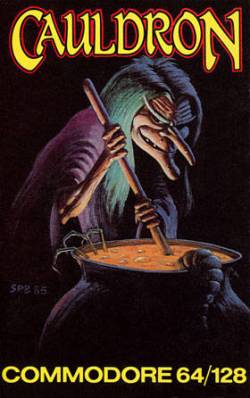
Cauldron is a video game developed and published by British developer Palace Software in 1985 for the ZX Spectrum, Commodore 64, and Amstrad CPC home computer. It contains both platform game and horizontally scrolling shooter sections. Players control a witch who aims to become the "Witch Queen" by defeating the "Pumpking"

Bug-Byte Software Ltd. was a video game company founded in 1980 in Liverpool, initially producing software for the Acorn Atom and ZX80. Bug-Byte's first hit was Don Priestley's Mazogs which was one of the most successful titles for the ZX81. In 1983, it published Manic Miner, considered to be one of the most influential platform games of all time. The company went into liquidation in 1985 but their name and logo were purchased by Argus Press PLC for use as a budget software label.
Crystal Computing, later renamed Design Design, was a British video game developer founded in 1982 by Chris Clarke and Ian Stamp while students at the University of Manchester. Graham Stafford, Neil Mottershead, Simon Brattel and Martin Horsley, joined the company as it expanded. The company's first software release was a compilation of games for the Sinclair ZX81, though it was with the ZX Spectrum that Crystal found its greatest success. A deal with the machine's manufacturer Sinclair to distribute Crystal's Zeus Assembler gave the company sufficient funds for a major marketing campaign for their next product, Halls of the Things, an arcade adventure game that became their most successful title.
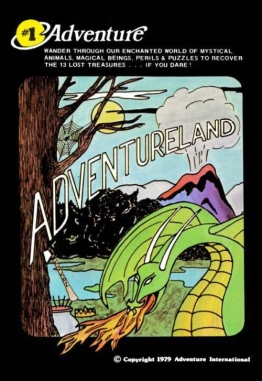
Adventureland is the first text adventure video game for microcomputers, released by Scott Adams in 1978. The game involves searching for thirteen lost artifacts in a fantasy setting. Its success led Adams to form Adventure International, which went on to publish thirteen similar games in the Adventure series, each in different settings.

Pirate Adventure is a text adventure program written by Scott Adams.
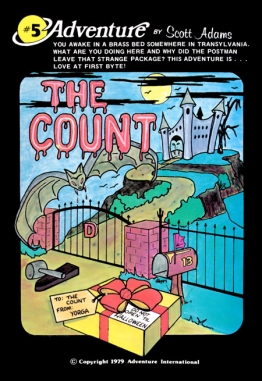
The Count is a text adventure written by Scott Adams and published by Adventure International in 1979. The player character has been sent to defeat the vampire Count Dracula by the local Transylvanian villagers, and must obtain and use items from around the vampire's castle in order to defeat him.

Questprobe featuring The Hulk is a 1984 graphic adventure video game developed and published by Adventure International in collaboration with Marvel Comics. It is the first entry in Questprobe, an intended series of graphic adventure games that only released three installments before the developer's bankruptcy. The game's narrative follows the Marvel superhero Hulk and his human alter-ego Bruce Banner, who must explore the mysterious lair of the Chief Examiner. The graphics and story outline were created by Marvel artists and writers. Critical reception was generally positive, with much of the praise going to the visuals. Reactions to the gameplay were mixed, especially upon the game's budget re-release, by which time it was considered dated.
Adventure International was an American video game publishing company that existed from 1979 until 1986. It was started by Scott and Alexis Adams. Their games were notable for being the first implementation of the adventure genre to run on a microcomputer system. The adventure game concept originally came from Colossal Cave Adventure which ran strictly on large mainframe systems at the time.
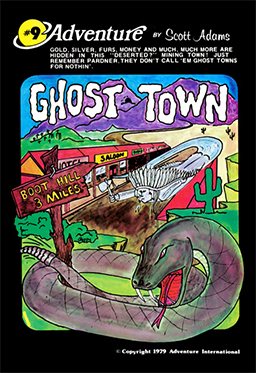
Ghost Town is a text adventure developed by Adventure International and released in 1980. It is part of the Adventure series of games developed by Scott Adams, preceded by Adventureland, Pirate Adventure, and Strange Odyssey.
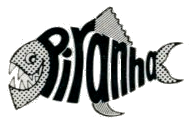
Piranha Software was a short-lived video game publishing label created by Macmillan Publishers in 1986 and closed eighteen months later. In that time it gained a reputation for its unusual output from well known developers such as Don Priestley, Design Design and Delta 4. The majority of their games featured licensed properties including the first video game based on the Discworld novels and two games based on the animated television series The Trap Door.

Questprobe featuring Human Torch and the Thing is the third video game in the Questprobe series.

The Book of Adventure Games is a book by Kim Schuette published in 1984 by Arrays, Inc.
















